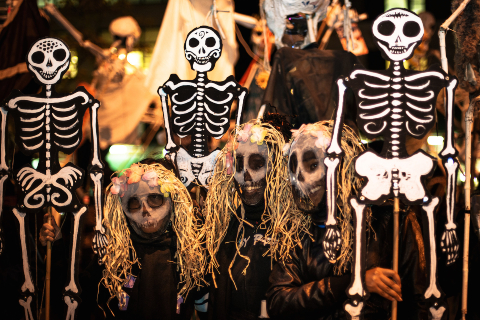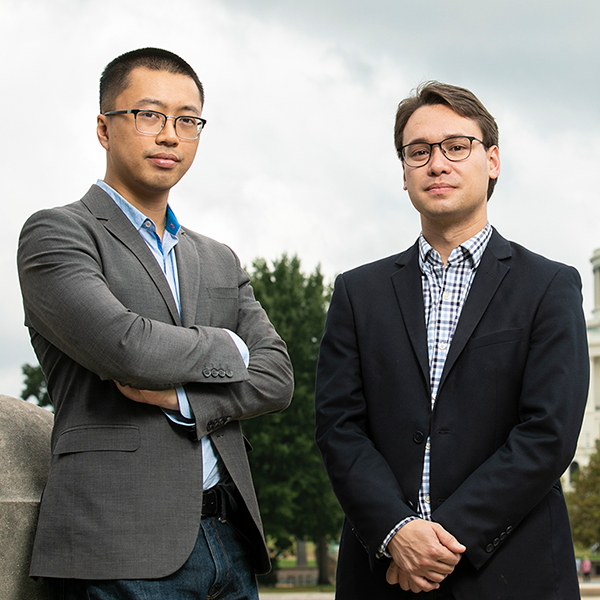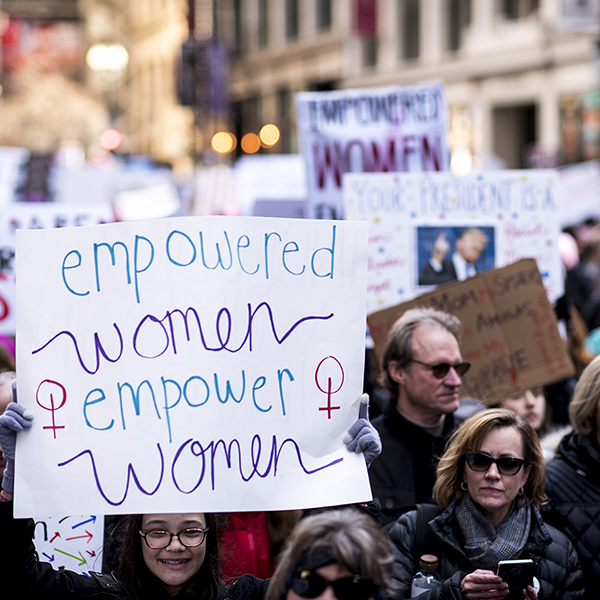An eye, bulging and enormous, floats down Sixth Avenue in New York. It pauses, looms over a small child, unblinking and still.
Glowing crystals, disconcertingly human in form, drift among the skyscrapers, and then disappear into the darkness.
Sinewy bodies, scaly jaws and spiked tails swirl in a danse-macabre; chimeras combining and recombining into creatures seen before, vanishing into the murk of the city, never to be seen again.
These otherworldly apparitions have all made appearances at the head of one of New York’s most beloved annual events, the Village Halloween Parade, which regularly attracts 50,000 participants and up to two million spectators. And all three of those strange creations – and many, many more – were conjured up by Sophia Michahelles, BA’98, and her collaborators.

Michahelles is the co-founder of the Processional Arts Workshop and she and her team have been designing and constructing fantastical puppet creatures for the parade for more than 20 years.
She takes the responsibility very seriously. The giant puppets that she and her colleagues create set the tone for one of the largest Halloween parades on the planet. And New Yorkers have famously high standards for their public theatre. Aiming for “spooky” isn’t enough.
“Sometimes we pluck something that seems the right thing to do as a theme, and then later find it seems to be in the zeitgeist,” she says. The process will often demand weeks of research – into the history of séances, for instance, or 19th century curiosity cabinets – that are then re-imagined for the Sixth Avenue audience. The theme for the 2019 parade will be “Wild Thing.”
Each year’s parade has a different theme and Michahelles and her Processional Arts Workshop partner Alex Kahn develop their concepts to reflect that theme. The process of making their vision a reality depends on the skill and enthusiasm of dozens of volunteers, who attend “puppet raisings” (like prairie barn raisings, but with a lot more paper maché and fewer cows).
Michahelles traces the moment that set her on her current path to McGill. When she first enrolled at McGill, it was to complete a major in art history with an eye toward pursuing studies in architecture.
As an undergraduate student, she participated in student theatre, applying her artistic flair to set design and technical direction for the Tuesday Night Café Theatre, soon falling in love with the stage.
In her final year, the company took on the South Africa apartheid drama Tooth and Nail, which called for giant puppets. With an eye on her impending graduation and further burnishing her CV, Michahelles wanted to push that job off to someone else, to focus on the set design.

“I wanted to do the serious work: puppets seemed quirky. I didn’t want to do it, but [faculty advisor] Myrna Wyatt Selkirk said ‘you have to,’ and I am so glad I did,” she remembers.
Michahelles hasn’t worked in the theatre since Tooth and Nail, but credits the experience – and the support of Selkirk – to opening her eyes to the possibilities of her chosen art form. Selkirk did something else that had a lasting impact on Michahelles – she placed the actors in the seating area and the audience on the stage. It has influenced the way that Michahelles looks at the unique alchemy between performers, audiences and the space where a performance occurs ever since.
“That experience, both what I was doing in terms of creating the puppets and realizing I was creating space in the same way [as with set design] and Myrna’s decision to switch the audience and the performance in terms of where they were … that helped me realize we can do this anywhere. We could do it on the street, we can do it outside. It’s a different way of presenting performance and creating your own rules as you go.”
Formed as a non-profit, the Processional Arts Workshop aims to revive and explore the kind of Mardis Gras or carnival-like performances that characterize village festivals in Europe or the Caribbean and Latin America.
Michahelles and her collaborators have brought their process to New Orleans, Europe and the Caribbean, working with locals to develop processions rooted in their communities. The giant puppets they create catch the eye, but how those creatures move and interact with the spaces and people around them is, as Michahelles explains, where the art lives.
“Puppets are often a part of it, but they are not definitional to the work: what is definitional, is a group of people walking through their space – whether their city, or their park. It’s a performative way of changing that space.”
Images: (Above) The Cabinet of Curiosities from the 2017 parade (photo by Alex Kahn); The “Totentanz” skeletons and masks created by Michahelles and her team have appeared in the parade’s Day of the Dead section every year since debuting in 2009 (photo by Mark Feigenbaum)


